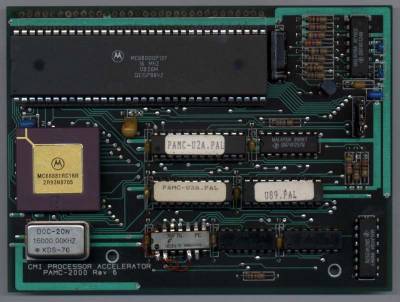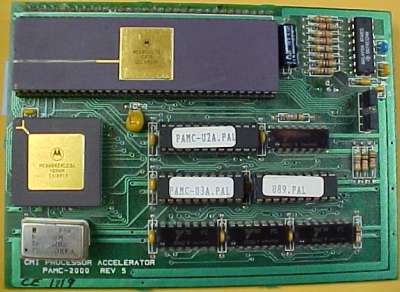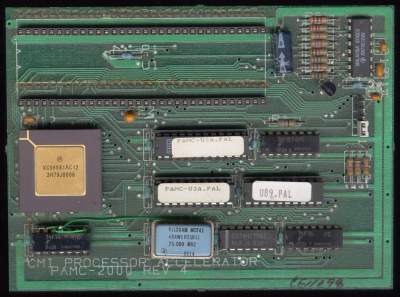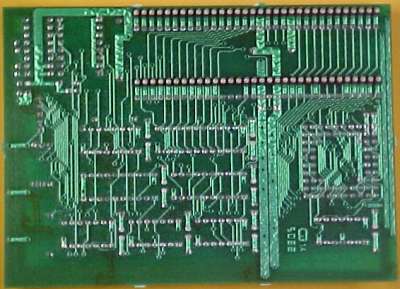
Picture of a Rev 6 card. This picture shows the 68000 mounted on board.

Picture of a Rev 6 card. This picture shows the 68000 mounted on board.

Picture of a Rev 5 Card.

Picture of a Rev 4 card. This picture does not show the 68000 on board.

Picture showing the rear of the card
Download the manual
Hi Res Version of Rev 6 (800 x 604)
Hi Res Version of Rev 4 (758 x 604)
| Processor: | 68000@14Mhz (switchable to 7Mhz) or 68010@14Mhz (switchable to 7Mhz) |
| FPU: | Optional 68881 (PGA), (a seperate crystal must also be obtained) |
| MMU: | None |
| Max Ram: | None |
| Ram Type: | Does not have support for adding RAM. |
An accelerator board which plugs into the CPU socket of an A2000. It is also compatible with the A500, however the dimensions mean that it may hang over the Agnus chip, preventing installation of a Megachip. It also hangs over the Agnus in the A2000, however the A2000 has extra space meaning a riser can be used. The board also covers the Kickstart chips which may mean you will have difficulting using a ROM switcher. The card can be set to either 14Mhz or 7Mhz using the software provided (PA), dropping to 7Mhz is to help with any backwards compatibility problems. Replacement Workbench 1.3 maths libraries are supplied (providing you are using WB1.3) to take advantage of the FPU if one is fitted.
Jumpers

J1: Fast ROM
When the two jumper pins are shorted, the accelerator runs in "Fast ROM" mode where the Kickstart ROM is accessed with a reduced number of wait-states when the processor is running at 14Mhz. Some A500's and A2000's with Kickstart 1.3 are not able to handle this feature, and the jumper should be disabled.
J2: Forced 14 Jumper
Normally the PA program is used to switch the clock speed to 14MHz. This can be done using a project icon, or added to the startup-sequence. However, some self-booting games do not execute a startup sequence, and some users wish to run at 14mhz at all times. The jumper has 2 potitions, but pin 1 is not marked. Looking at the jumper with the (Jumper) 2 identifier upright, the right and middle pins jumpered will allow the processor to be switched between 7 and 14mhz using the software. The middle and left pins jumpered will force the processor to run at 14Mhz at all times.
Thanks to Ron Mascaro, Steve Geary and Michael Mellendorf